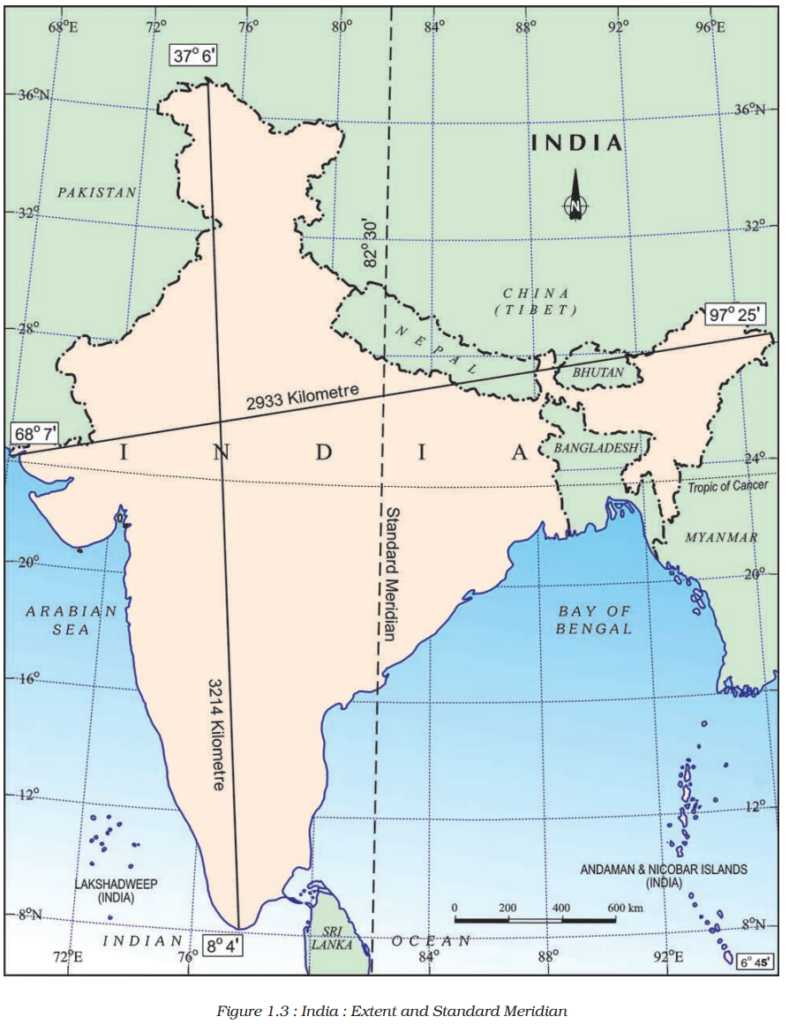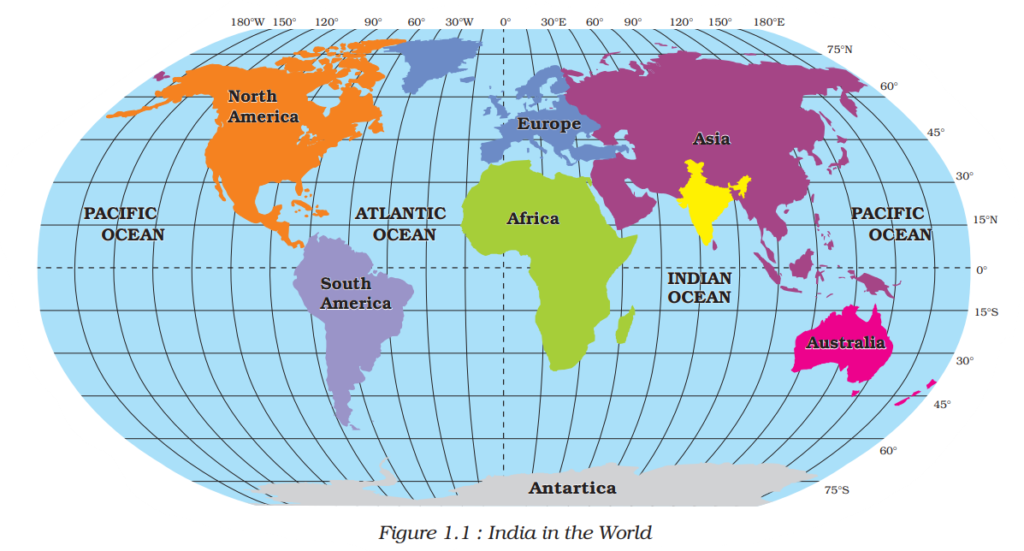Welcome to CBSE class 9 Geography Notes! In this post, we will delve into Chapter 1 – ‘India Size and Location’. Understanding the size and location of a country is crucial to comprehend its geographical, economic, and political significance. These notes will equip you with a thorough understanding of India’s location, size, and other important aspects related to it as given in the chapter ‘India Size and Location’. So, let’s get started and enjoy a free learning here👍

Location of India:
- India is a vast country located entirely in the Northern hemisphere.
- The mainland extends between latitudes 8°4’N and 37°6’N and longitudes 68°7’E and 97°25’E.
- The Tropic of Cancer (23° 30’N) divides the country into almost two equal parts.
- The Andaman and Nicobar islands lie to the southeast, while the Lakshadweep islands are in the Arabian Sea to the southwest of the mainland.
Size of India:
- India’s land mass has an area of 3.28 million square km.
- India’s total area accounts for about 2.4 per cent of the total geographical area of the world.
- India is the seventh largest country in the world.
- India has a land boundary of about 15,200 km.
- The total length of the coastline of the mainland, including Andaman and Nicobar and Lakshadweep, is 7,516.6 km.
- The latitudinal and longitudinal extent of the mainland is about 30°with a tapering (smaller) east-west extent than north-south extent.
India and The World:

- India is a southward extension of the Asian continent.
- India’s central location between East and West Asia provides it with a strategic location.
- The Deccan Peninsula protrudes into the Indian Ocean, allowing India to establish close contact with West Asia, Africa, Europe, Southeast, and East Asia.
- No other country has a longer coastline on the Indian Ocean than India, and the naming of an ocean after it justifies its eminent position.
- India’s contacts with the world have continued through ages.
- India’s relationships through the land routes are much older than her maritime contacts.
- The passes across the mountains in the north provided passages to ancient travellers, and exchanges of ideas and commodities have occurred since ancient times.
- The ideas of the Upanishads and the Ramayana, Indian numerals, and the decimal system could reach many parts of the world.
- Spices, muslin, and other merchandise were taken from India to different countries.
- The influence of Greek sculpture and architectural styles from West Asia can be seen in different parts of India.
India’s Neighbours:

- India occupies an important strategic position in South Asia.
- India has 28 states and Eight Union Territories.
- India shares its land boundaries with Pakistan, Afghanistan, China (Tibet), Nepal, Bhutan, Myanmar, and Bangladesh.
- Sri Lanka and Maldives are India’s southern neighbours across the sea –
- Sri Lanka is separated from India by a narrow channel of sea formed by the Palk Strait and the Gulf of Mannar,
- while Maldives Islands are situated to the south of the Lakshadweep Islands.
- India has strong geographical and historical links with its neighbours.
India’s Socio-economic Progress:
- India has achieved multi-faceted socio-economic progress during the last five decades.
- India has moved forward displaying remarkable progress in the field of agriculture, industry, technology, and overall economic development.
- India has also contributed significantly to the making of world history.
Historical Significance of India
- India is one of the ancient civilizations in the world.
- India has contributed significantly to the making of world history.
- The various routes have contributed to the exchange of ideas and commodities since ancient times.
- The ideas of the Upanishads and the Ramayana, the stories of Panchatantra, the Indian numerals and the decimal system, and the spices, muslin and other merchandise were taken from India to different countries.
- The influence of Greek sculpture and the architectural styles of dome and minarets from West Asia can be seen in different parts of India.

